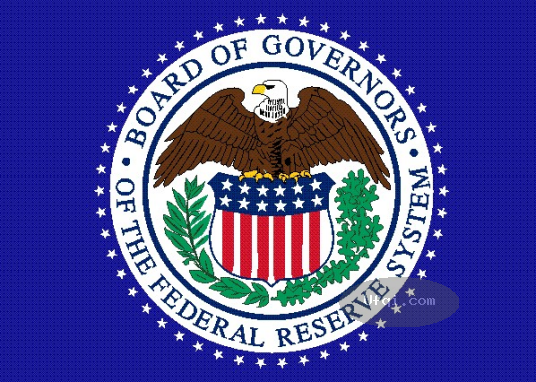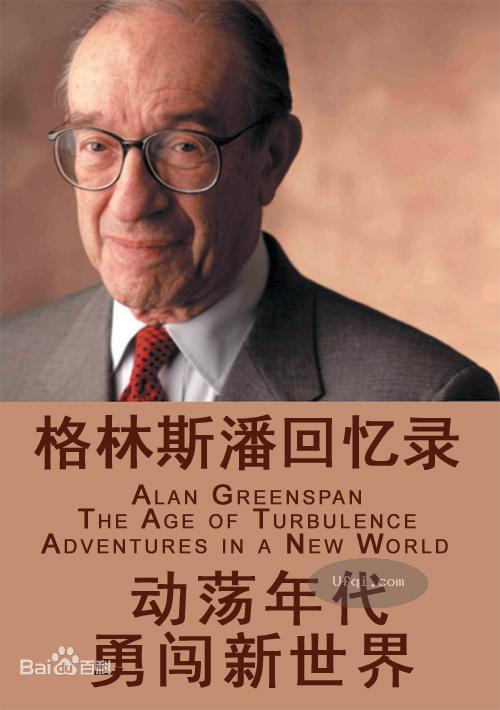


2023-05-13 , 8775 , 101 , 199
美国联邦储备委员会主席艾伦格林斯潘回忆录——动荡年代:勇闯新世界-the age of turbulence-34
计划经济与市场经济
----
计划经济是对生产、资源分配以及产品消费事先进行计划的经济体制。市场经济是指通过市场配置社会资源的经济形式。
简单地说,市场就是商品或劳务交换的场所或接触点。市场可以是有形的,也可以是无形的。由于几乎所有计划经济体制都依赖于指令性计划,因此计划经济也被称为指令性经济。
A large part of my itinerary consisted of meetings with high officials.
Each surprised me in some way. While I'd studied free-market economics for much of my life, encountering the alternative and seeing it in crisis forced me to think more deeply than I ever had before about the fundamentals of capitalism and how it differed from a centrally planned system.
My first inkling of this difference had come during the drive into Moscow from the airport. In a field beside the roadway, I'd spotted a 1920s steam tractor, a clattering, unwieldy machine with great metal wheels.
"Why do you suppose they still use that?"
I asked the security man who was with me in the car.
"I don't know," he said. "Because it still works?"
Like the 1957 Chevrolets on the streets of Havana, it embodied a key difference between a centrally planned society and a capitalist one:
here there was no creative destruction, no impetus to build better tools.
No wonder centrally planned economic systems have great difficulty in raising standards of living and creating wealth. Production and distribution are determined by specific instructions from the planning agencies to the factories, indicating from whom and in what quantities they should receive raw materials and services, what they should produce, and to whom they should distribute their output.
The workforce is assumed to be fully employed, and wages are predetermined. Missing is the ultimate consumer, who in a centrally planned economy is assumed to passively accept the goods planning agencies order produced.
Even in the USSR, consumers didn't behave that way. Without an effective market to coordinate supply with consumer demand, the consequences are typically huge surpluses of goods that no one wants, and huge shortages of products that people do want but that are not produced in adequate quantities.
The shortages lead to rationing, or to its famous Moscow equivalent°™the endless waiting in line at stores. (Soviet reformer Yegor Gaidar, reflecting on the power of being a dispenser of scarce goods, later said,
"To be a seller in a department store was the same as being a millionaire in Silicon Valley. It was status, it was influence, it was respect."
)
127
The Soviets had staked their entire nation on the premise that central planning, rather than open competition and free markets, is the way to achieve the common good.
Contemplating this made me eager to meet Stepan Sitaryan, the right-hand man of the chief of Gosplan, the state planning committee. The Soviet Union had a bureaucracy for everything, and the key ones had names beginning with gos, or state.



Gosnab allocated raw materials and supplies to industry, Gostrud set wages and work rules, Goskomtsen set prices. At the pinnacle sat Gosplan°™which, as one analyst memorably put it, dictated "the type, quantity, and price of every commodity
produced at every single factory and plant across 11 time zones."
Gosplan's vast empire included military factories, which had access to the best labor and the best materials and were universally regarded as the USSR's
finest.*
In total, Western analysts estimated, the agency controlled between 60 percent and 80 percent of the nation's GDP. And Sitaryan and his boss, Yuri Maslyukov, were the officials at the controls.
A diminutive man with a white pompadour and a good command of English, Sitaryan turned me over to a senior Gosplan aide who trotted out elaborate input-output matrices, the mathematics of which would have dazzled even Wassily Leontief, the Russian-born Harvard economist who pioneered them.
Leontief's notion was that you could precisely characterize any economy by mapping the flow of materials and labor through it.
Done thoroughly, your model would be the ideal instrument panel. Theoretically
it would let you anticipate every impact on every segment of the economy from the change of one output, such as the production of tractors°™or, more to the point in the Reagan era, a major increase in military production to respond to the U.S. arms buildup for the "Star Wars" missile defense. But Western economists generally considered input-output matrices to be of limited use because they failed to capture the dynamism of an economy°™in the real world, the relationships between inputs and outputs almost invariably shift faster than they can be estimated.
*Indeed, the USSR's supposedly passive consumers flocked whenever possible to acquire the superior household goods produced by military factories. These consumers were as sophisticated as any in the West.
128
THE FALL OF THE WALL
Gosplan's input-output model had been elaborated to Ptolemaic perfection.
But judging by the top aide's remarks, I couldn't see that any of the limitations had been solved. So I asked how the model took into account dynamic change. He just shrugged and changed the subject.
Our meeting obliged him to keep up the pretext that planners can set production schedules and manage a vast economy more efficiently than free markets can do.
I suspected that the aide didn't actually believe that, but I couldn't tell whether what he really felt was cynicism or doubt.
One might think that smart planning authorities should have been able to adjust to their models' shortcomings. People like Sitaryan are smart, and they tried. But they took too much on themselves.
Without the immediate signals of price changes that make capitalist markets work, how was anyone to know how much of each product to manufacture? Without the help of a market pricing mechanism, Soviet economic planning had no effective feedback to guide it. Just as important, the planners did not have the signals of finance to adjust the allocation of savings to real productive investments
that accommodated the population's shifting needs and tastes.
Years before becoming Fed chairman, I'd actually tried picturing myself in the central planner's job.
From 1983 to 1985,1 served under Reagan on the President's Foreign Intelligence Advisory Board (PFIAB), where I was asked to review U.S. assessments of the Soviet ability to absorb the strain of accelerated armament.
The stakes were enormous: The president's Star Wars strategy rested on the assumption that the Soviet economy was no match for ours. Ramp up the arms race, the thinking went, and the Soviets would collapse trying to keep up, or they'd ask to negotiate; in either case, we'd hold out our hands and the cold war would end.



UfqiLong
The assignment was clearly too important to turn down, but it daunted me. It would be a Herculean task to learn the ins and outs of a production and distribution system so different from ours.
Once I dug into the project, though, it took me only a week to conclude that it was impossible:
there was no reliable way to assess their economy.
Gosplan's data were rotten. Soviet managers up and down the line had every incentive to exaggerate their factories' output and pad their payrolls. Worse, there were large internal inconsistencies in their data that I couldn't reconcile and I suspected neither could Gosplan.
I reported to the PFIAB and the president that I couldn't forecast whether the challenge from Star Wars would overload the Soviet economy and I was fairly certain the Soviets couldn't either.
129
As it turned out, of course, the Soviets didn't try to match Star Wars.
Gorbachev came to power and launched his reforms instead.
I mentioned none of this to the Gosplan officials. But I was glad I wasn't in Sitaryan's shoes°™the Fed's job was challenging, but Gosplan's was surreal.
Meeting with the head of the Soviet central bank, Viktor Gerashchenko, was much less fraught. Officially he was my counterpart, but in a planned economy, in which the state decides who gets funds and who does not, banking plays a much smaller role than in the West: Gosbank was little more than a paymaster and record keeper.
If a borrower fell behind in payments on a loan or went into default, so what? Loans were essentially transfers among entities all owned by the state. Bankers did not need to worry about credit standards, or interest rate risks, or market value changes°™the financial signals that determine who gets credit, and who does not, and hence who produces what, and sells to whom, in a market economy.
All the topics I'd talked about the previous evening were simply not part of Gosbank's world.
Gerashchenko was forthcoming and friendly°™he insisted we call each other Viktor and Alan. He spoke excellent English, having spent several years running a Soviet-owned bank in London, and he understood what Western banking was about.
Like many people, he made believe that the Soviet Union was not that far behind the United States.
He sought me out, and sought out other bankers in the West, because he wanted to be part of the prestigious central banking establishment. To me he seemed totally benign, and we had a pleasant talk.
Just four weeks later, on November 9, 1989, the Berlin Wall came down.
I was in Texas on Fed business, but like everybody else that night I was glued to the TV. The event itself was remarkable, but even more amazing to me in the following days was the economic ruin the fall of the wall exposed.
One of the most fateful debates of the twentieth century had been the question of how much government control is best for the common good.
After World War II, the European democracies all moved toward socialism, and the balance was tilted toward central government control even in America°™the entire war effort by American industry had been effectively centrally planned.
130
本页Url



🔗 连载目录
🤖 智能推荐









